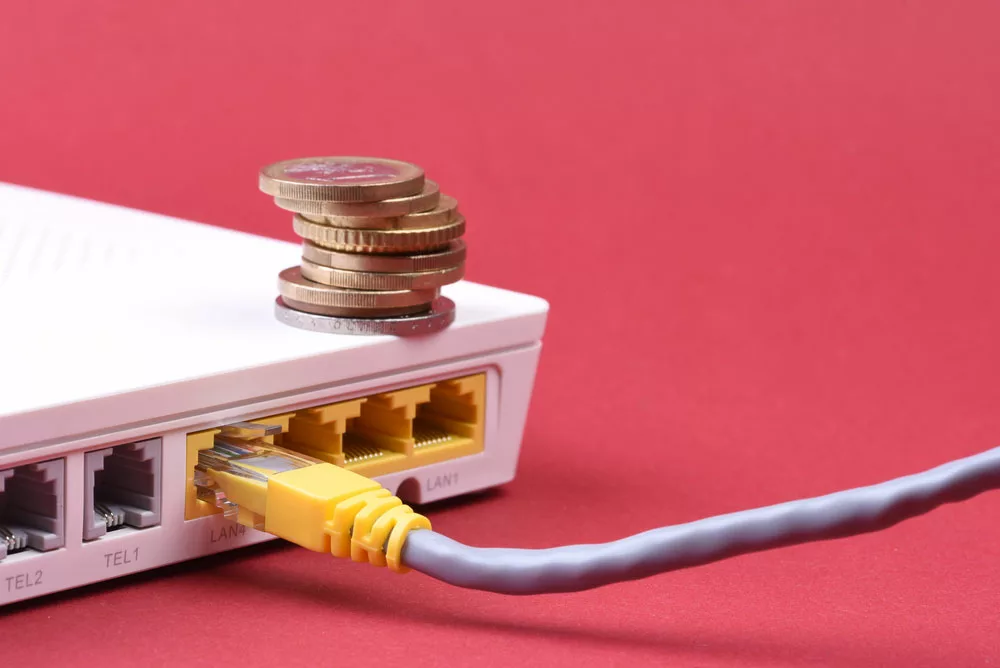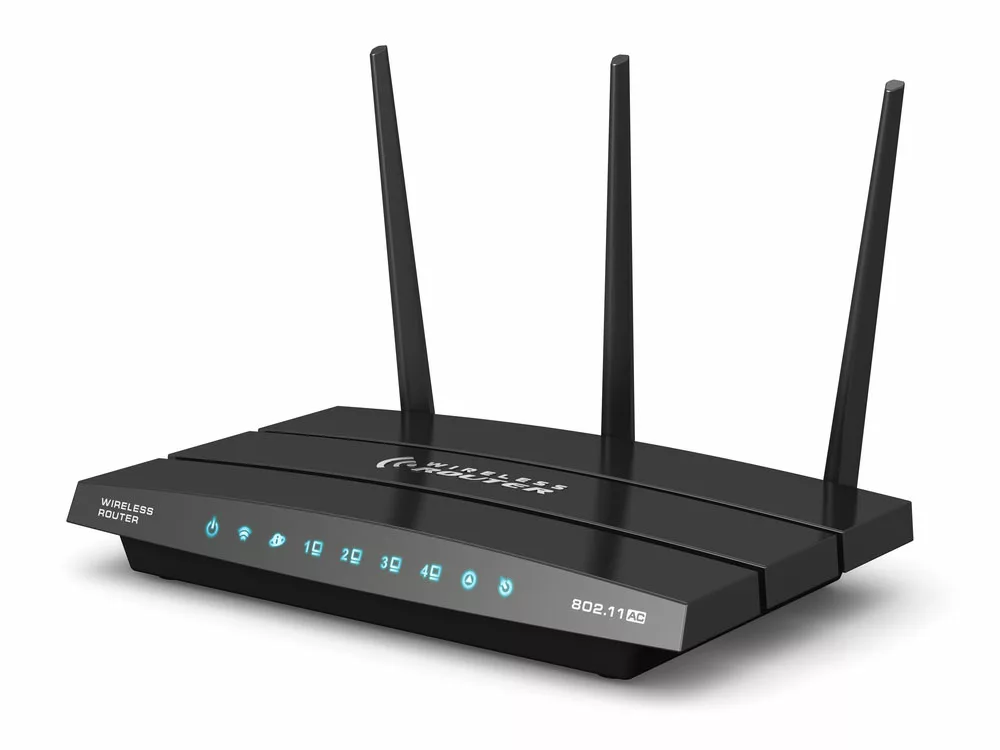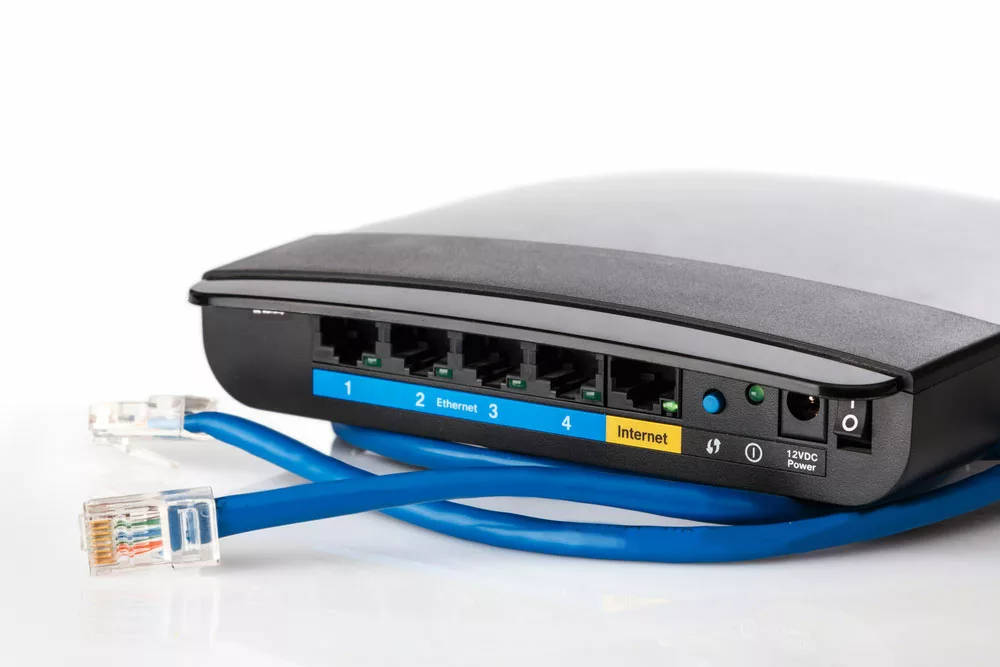Does An Ethernet Cable Make WiFi Faster, Off late have you noticed that your WiFi internet speeds are a bit too slow to carry out your day-to-day tasks?
You’re probably wondering how to fix the problem and came across the thought of using an ethernet cable.
Therefore, you’re probably asking yourself ‘Does an ethernet cable make WiFi faster’.
The article below will help answer your question and give you a better understanding of the matter.
Table of Contents
- Is Ethernet Faster Than WiFi?
- How Much Faster is Ethernet?
- How Much Faster is WiFi?
- Does an Ethernet Cable Make WiFi Faster?
- Potential Causes of Slow Ethernet Connections
- How To Troubleshoot a Slow Ethernet Connection
- Conclusion
Is Ethernet Faster Than WiFi?
Point blank ethernet is definitely faster than WiFi, which can be confirmed by performing a speed test. With the same internet plan, the internet speed between an ethernet connection and a WiFi connection is as follows:
- WiFi connection speeds – Download Speed is 320.7 Mbps and Upload Speed is 5.7 Mbps.
- Ethernet connection speeds – Download Speed is 760.7 Mbps and Upload Speed is 3.2 Mbps.
How Much Faster is Ethernet?
Ethernet refers to a wired connection with the technical name IEEE 802.3 that functions by directly connecting a device to the modem via a cable.
There are a number of Ethernet standards approved by the IEEE (Institute of Electrical and Electronics Engineers) that ensures internet protocols are adhered to and standardized.
Some of which include Gigabit Ethernet (the most common today with up to 1 Gbps), 10 Gigabit Ethernet (offering up to 10 Gbps), and Fast Ethernet (offering up to 100 Mbps).
The above-mentioned standards determine the max speed a device can handle however another important variable is the cable type.
There are a number of ethernet cable types in the market today and the type of ethernet you use matters.
- Cat 5 – this is an older version that is nearly obsolete. Its maximum speed is 100 Mbps which isn’t future-proof even if your current speed is lower.
- Cat 5e – this is basically an improved Cat 5 cable that serves as the budget-friendly ethernet cable option. It can support speeds of up to 1 Gbps which is about enough for most users although this option is also not future-proof.
- Cat 6 – this is the current gold standard ethernet cable. Although it supports the same speeds as the Cat 5e cable (1 Gbps), it offers increased bandwidth (twice as much). Therefore, they provide overall better performance. Also, they are shielded to reduce interference.
- Cat 6a – this is the current premium ethernet cable capable of supporting speeds of up to 10 Gbps and offering a higher bandwidth compared to Cat 6 ethernet cables. If your internet plan is over 1 Gbps or you want a future-proof ethernet cable a Cat 6a ethernet cable is the best choice.
For devices that require a fast, reliable, and constant connection the best option is to use ethernet cables.
Also, in scenarios where security is vital ethernet connections are the better option. However, all these advantages come at the cost of convenience.

Ethernet connection
How Much Faster is WiFi?
WiFi refers to a wireless internet connection defined by IEEE standard 802.11. The term WiFi isn’t an acronym but a brand name made by a marketing firm to provide a way for users to connect multiple devices at the same time.
Although WiFI connections don’t need any physical connection they need a specialized piece of equipment which is a wireless router.
The wireless router acts as an access point taking the signal from the modem and broadcasting it to create a network.
You can buy a wireless router separately meaning you’ll need two components for your network. However, some wireless routers are inbuilt in the modem referred to as wireless gateways.
Often rented equipment from your ISP is usually a wireless gateway to eradicate the need for you to buy any separate equipment.
It’s important to consider if the wireless router you plan on buying is capable of supporting your internet plan’s maximum speed.
Similar to ethernet there are a number of WiFi protocols offering increased speed and bandwidth:
- 802.11n – this is the older standard that’s rarely used with new equipment however you can find it floating around on used devices and routers. Its maximum data rate is 450 Mbps and is therefore not compatible with a number of today’s high-speed connections.
- 802.11ac – you can still find this standard on a limited number of new budget-oriented devices and routers. It supports speeds of up to 1.73 Gbps and can serve you well in most instances. However, it isn’t very future-proof.
- 802.11ax – this is the current high-end standard commonly referred to as WiFi 6. It can support speeds of up to 2.4 Gbps making it the most future-proof choice.
WiFi connections are all about convenience as evidenced by the fact that even the most modern and advanced WiFi standard can’t keep up with ethernet in terms of speed.
However, WiFi is more convenient for most people especially since most devices today are highly mobile.

Wireless Router
Does an Ethernet Cable Make WiFi Faster?
Below is a chart showing the fastest speeds you can get via various ethernet cables and the latest WiFi networks. Unless indicated otherwise the max speed of the ethernet cable is the speed at the end of a 100m cable.
| Connection Type | Max Speed |
| Cat 5 | 100 Mbps |
| Cat 5e | 1 Gbps |
| Cat 6 | 1 Gbps |
| Cat 6a | 10 Gbps |
| WiFi 5 | 3.5 Gbps |
| WiFi 6 | 9.6 Gbps |
| WiFi 6E | 9.6 Gbps |
It’s important to remember that the maximum speed mentioned for WiFi networks is the max bandwidth for all the devices under the network and not for individual connections.
While you might see transfer speeds hit a few gigabits on WiFi 6E or WiFi 6, you’ll never see it hit the max bandwidth of 9.6 Gbps to any single device connected.
Unlike with WiFi networks, if the ethernet cable and ports on your computer, PC, and router are rated 10 Gbps you should expect that every single device receives the maximum bandwidth.
Although speed is an advantage it’s important to note that the speed of your internet connection is the beginning of all your online activities.
Therefore, if your internet bandwidth is much slower than the type of connection you have, increasing the speed of the connection won’t make a difference.
However, ethernet will affect the speed between devices on the network. For instance, if you are trying to transfer files between two computers as fast as possible, ethernet will get the job done faster compared to WiFi.
The internet connection is not involved in this because it depends on the max speed your local network hardware can provide.
Below are some examples of when local speed is important.
- If a number of files are backed up to a shared hard drive, backup server, or NAS, the backup is faster using ethernet cables.
- If your devices stream from media servers on your network (such as Kodi and Plex), then an ethernet connection will give you an added boost in quality.

Router with ethernet ports
Potential Causes of Slow Ethernet Connections
Below are some of the reasons your ethernet connection might be slow.
Problems with the Ethernet Cable
Your cable might be older meaning it has a lower data cap. For instance, if you have a cable limit the speed to 10 Mbps which is rather slow.
Another factor is cable length which could also cause slow connections.
Also, it might just be that your cable isn’t connected or is damaged in which case you should consider troubleshooting the cable or just buying a new cable.
Firmware or Software Issues
Your console might have a setting limiting its internet speed. A common issue is a problem with the network interface card that allows you to connect to the internet.
To fix this issue go to settings then the network and internet option then change adapter options to disable the card then allow it a few minutes before enabling again.
Viruses or Malware
If you ruled out any hardware and software issues it could be a virus.
Malware and viruses affect the device in a number of ways, one of them being slowing down your internet speeds.
To fix this use your Malware Bytes or virus scanning software to fix any issues and potentially return your internet speeds to normal.
Router Configuration or Networking Hardware
Low internet speeds might be a result of old networking hardware.
For instance, if your drive hasn’t been updated for a couple of hours it might cause a slow ethernet connection.
The same could apply to your PC as it could be that your NIC needs to be upgraded by replacing the drive or replacing your entire PC unit.
Also, you might have configured your router incorrectly. Configuring the router involves keying in your IP address in the browser and checking the settings.
It’s best to consult your internet service provider because every router is different.
How To Troubleshoot a Slow Ethernet Connection
Follow the steps below to help you troubleshoot a slow ethernet connection.
Do a Speed Test
You can perform a speed test by going to your browser and typing a speed test.
Perform a speed test with various cables and devices to help you make sure the problem was with the device.
Switch Ethernet Ports
Sometimes simply switching the ethernet port could be the solution as the previous port could be defective.
Run an Antivirus Scan
Run an antivirus scan and antimalware program as viruses could be the cause of slow ethernet connections.
Turn Off your VPN
VPN offers total privacy by masking your IP address, which can slow down your internet speed because the program has to connect you to a different country and the distance could slow down your internet connection.
Check your Network Connection Settings
Confirm your network settings as often an update or other incidents might have changed your settings.
Update Drivers
As mentioned earlier, updating your drivers could be a solution to your slow ethernet connection speeds.
Install Firmware Updates
Routers also have firmware that may need updating. To do this open a browser and enter your IP address to login to your router.
Some routers automatically update but just to be sure check if there are any required updates.
If you find trouble doing this it’s best to contact your internet service provider.
Contact your ISP
This is your last resort if all the tips above have failed to restore your internet speed back to normal.
The problem could have nothing to do with your hardware, software, or firmware and only your ISP knows how to fix the problem.
Conclusion
Hopefully having discussed all about ethernet and WiFi speeds you can make a better decision about what connection type serves you best.
Also, in case you run into any slow ethernet speeds you can now fix them on your own. If you have any queries feel free to contact Cloom Tech.
